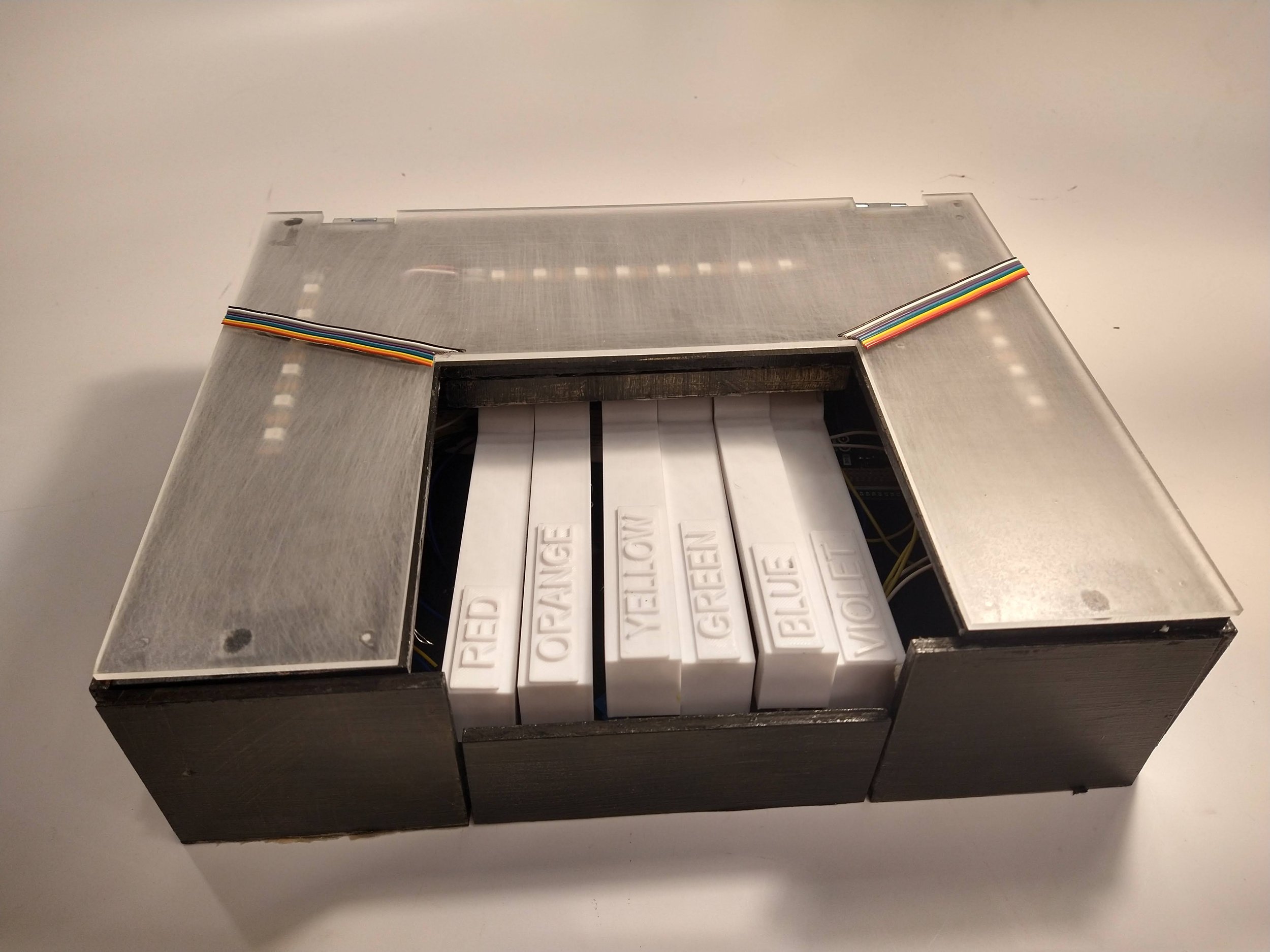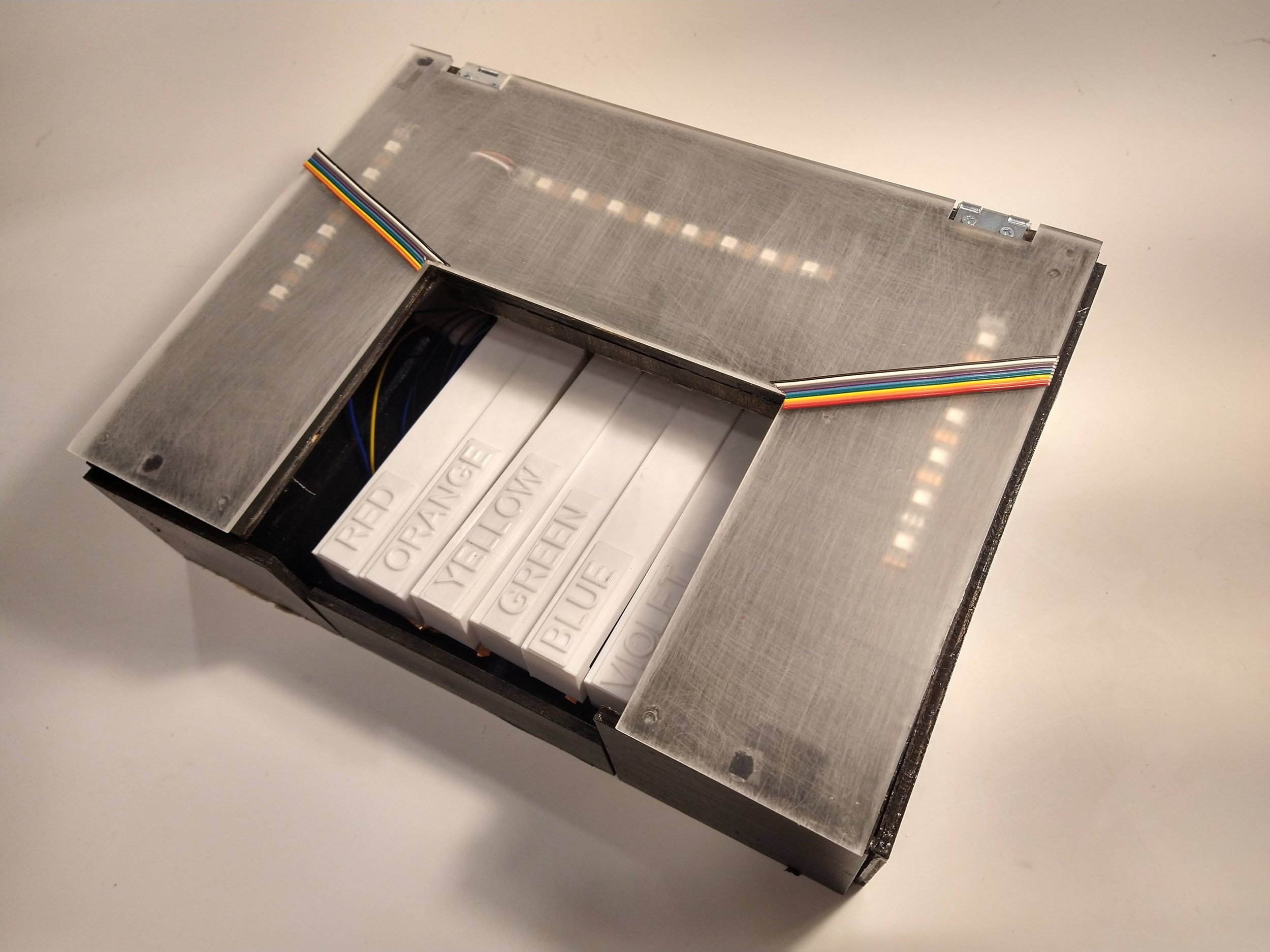Chromakey
FALL 2021
Partner - Ash Duy
*Click on the gallery images to make them larger
DESCRIPTION/PROJECT SUMMARY
The final project for Object this semester was to create an interactive object that pushed our abilities and tested the skills we obtained over the course of the semester. When the professor showed some examples of past projects, there seemed to be two distinct categories: the pieces that were more objective and scientific, and the pieces that were more freeform and artistic. The latter intrigued me immediately. Coincidentally, we had started discussing designing for usability and accessibility in another class. One of the primary issues that hinders usability when it comes to electronics is the heavy reliance on color cues, such as the red and blue LEDs used in the logic probe lab at the beginning of the semester. This is where the idea for our final project comes in. How do you account for colorblindness when designing these interactions? Sure, you could use an auditory cue, such as a beep or a click, but do we need to stop there?
Color is vital to how we experience and interpret the world around us. It adds depth, emotion, and vibrancy to everything, especially music. If we change the color surrounding an object, our emotions and thoughts towards it change. But how do things differ when the range of color a person can perceive is narrowed? Are the emotions associated with certain colors lost entirely? This is where sound and color come together. If a person cannot accurately perceive the color of an object, perhaps there could be a way they could experience color in another way. Sound, for most people, tends to lack color when we think about it in a general sense. For individuals with synesthesia, however, color and sound are inseparable from one another. This connection provides the framework for our project; as it makes sound and color into a tactile, sensory experience for all. Our project will be a basic keyboard that allows colorblind people to experience color in a different way. Color is a form of light, and so behaves as a wave. This wave has a specific frequency that corresponds to the color, with red having the lowest frequency and purple having the highest frequency. Sound also behaves as a wave and can express these waves in the form of noise, with the frequency affecting the pitch of the sound. In short, it’s a way to hear color, as each key on the keyboard plays a note that has the same (or similar) frequency to the color listed on the key. Underneath each key will be a force-sensitive resistor (FSR). When the key is pressed, it will apply force to the FSR, which will send a signal to the microcontroller. Since the microcontroller is capable of using Bluetooth, it will communicate with an external computer. When the computer receives a signal from the microcontroller that a key has been pressed, it will play a note that has the same frequency as the color listed on the key pressed. Additionally, the microcontroller will tell an LED placed above the key to light up, with its brightness matching the frequency of the note as well. Once the key is released, the note stops and the LED turns off as it returns to its original position.
Overall, the primary purpose of this device is to allow individuals, both colorblind and not, to experience color in a unique, multi-sensory way.

